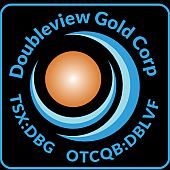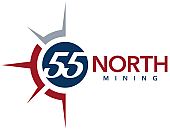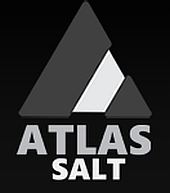 Azincourt drills 3,208 m at East Preston to date
Azincourt drills 3,208 m at East Preston to date
2022-03-01 11:51 ET – News Release
Also News Release (C-SYH) Skyharbour Resources Ltd (3)
Mr. Alex Klenman of Azincourt reports
AZINCOURT ENERGY REPORTS ELEVATED RADIOACTIVITY WITHIN SIGNIFICANT ALTERATION ZONE, AT THE EAST PRESTON URANIUM PROJECT
Azincourt Energy Corp. has provided an update on the continuing 2022 exploration program at the East Preston uranium project, located in the western Athabasca basin, Saskatchewan, Canada.
Drilling at the East Preston Project commenced on January 24th, and to date, 3,208 meters has been completed in 13 drill holes. Despite a period of extreme cold weather and its associated problems, two drill rigs are operational on the project. Ten drill holes are complete, one was abandoned, and two are in progress on the G- and K- Zones. Initial progress was reported in a previous press release dated February 14th, 2022.
Drilling continues on the northeast trending G-Zone (Figure 3) where eight holes have been completed and one hole is in progress. Extensive alteration and evidence of east-west cross-cutting structures have been intersected along the southern portion of the zone. EP0030 shows the best alteration on the G-Zone, with an extensive interval of hydrothermal hematite alteration and significant evidence for a steep east-west fault cross-cutting the main northeast trending structure and graphitic lithologies. Additional drilling will be undertaken to evaluate the significance of this alteration and associated cross cutting structure.
On the north-south trending K-Zone (Figure 2), two holes have been completed and one is in progress, with one hole lost in a sand filled fault zone at the north end of the zone. Drilling on the K-Zone has intersected extensive hydrothermal hematite alteration in all holes, indicating this alteration zone is at least 800 meters long. Drill hole EP0035 intersected an extensive zone of hydrothermal hematite more than 100 meters thick. Within this zone localized elevated radioactivity identified from both hand-held scintillometers and a downhole gamma probe was also encountered. Analysis of samples from this zone will be sent to the lab to evaluate the significance of the elevated radioactivity in this area. Additional drilling is underway to evaluate the significance of this alteration zone and to follow-up the elevated radioactivity identified.
The Company considers the drilling results to date to be significant, as major uranium discoveries in the Athabasca Basin such as McArthur River, Key Lake, and Millennium were primarily the result of drill testing of strong alteration zones related to conductor features. The identification of strong alteration zones is an important and meaningful step in locating key areas along the conductor trends where more attention is required.
As a consequence of the promising developments many holes have been drilled considerably deeper (to get through alteration and structure intersected) than initially planned and additional holes are being drilled to follow up key results. This means that while the planned overall meterage is expected to be achieved, fewer total holes may be completed and not all zones targeted for this program may be evaluated.
“We are very excited by the results coming in so far” said VP, Exploration, Trevor Perkins. “Both the G- and K-Zones are responding incredibly well, and the team is very excited by what they are seeing in the core. The results show that there is still a good deal of work to be completed in these areas and I can’t wait to see what the follow-up drilling reveals,” continued Mr. Perkins.
“Finding this broad zone of strong alteration is a significant development,” said president and CEO, Alex Klenman. “Alteration features are a crucial guide to locating uranium mineralization. Given what we know about alteration zones and their relationship to some very well-known discoveries, finding this at East Preston is certainly an encouraging development. We will continue to focus on the K-Zone for the time being to get a better idea of the extent of the alteration and the type and level of mineralization present,” continued Mr. Klenman.
The first shipment of core samples from the current drill program is scheduled to be delivered later this week to the SRC Geoanalytical Lab in Saskatoon. The Company expects to receive full suite assay results in early April. Results will be reported once received, reviewed, and verified.
About the Winter 2021-2022 Drill Program
TerraLogic Exploration Inc. is executing the winter 2022 diamond drilling program under the guidance and supervision of Azincourt’s Vice President, Exploration, Trevor Perkins, P.Geo, and Jarrod Brown, M.Sc., P.Geo, Chief Geologist and Project Manager with TerraLogic Exploration. The program is planned for approximately 6,000m of drilling in 30-35 drill holes. Drilling is focused on the A-G and K-H-Q trends, after having commenced in the G-Zone where the 2021 drill program ended. The program continues to evaluate the G-Zone and the K-H-Q trend (Figure 2).
East Preston Targets
The primary target area for the 2022 program continues to be the conductive corridors from the A-Zone through to the G-Zone (A-G Trend) and the K-Zone through to the H and Q-Zones (K-H-Q Trend) (Figures 1 and 2). The selection of these trends is based on a compilation of results from the 2018 through 2020 ground-based EM and gravity surveys, property wide VTEM and magnetic surveys, and the 2019 through 2021 drill programs, the 2020 HLEM survey indicates multiple prospective conductors and structural complexity along these corridors.
The 2019-2021 drilling programs on the A-G Trend confirmed that geophysical conductors comprise structurally disrupted zones that are host to accumulations of graphite, sulphides, and carbonates. Anomalous radioactivity has been demonstrated to exist within these structurally disrupted conductor zones. The 2022 drilling program will target similar structurally disrupted zones prioritized on the presence and strength of corresponding electromagnetic, magnetic and gravity geophysical anomalies.
Permitting and Community Engagement Permits are in place to complete all the planned work through the winter of 2022. Azincourt Energy continues to be engaged in regular meetings with the Clearwater River Dene Nation and other rights holders to ensure that concerns of the local communities are addressed. Azincourt looks forward to a continued close working relationship with CRDN and other rights holders to ensure that any potential impacts and concerns are addressed and that the communities can benefit from activities in the area through support of local business, employment opportunities, and sponsorship of select community programs and initiatives. Several members of the Clearwater River Dene Nation are directly employed on site or provide support and services to keep the camp and program running.
About East Preston
Azincourt controls a majority greater-than-70-per-cent interest in the 25,000-plus hectare East Preston project as part of a joint venture agreement with Skyharbour Resources Ltd. and Dixie Gold. Three prospective conductive, low-magnetic signature corridors have been discovered on the property. The three distinct corridors have a total strike length of over 25 km, each with multiple EM conductor trends identified. Ground prospecting and sampling work completed to date has identified outcrop, soil, biogeochemical and radon anomalies, which are key pathfinder elements for unconformity uranium deposit discovery.
The East Preston project has multiple long linear conductors with flexural changes in orientation and offset breaks in the vicinity of interpreted fault lineaments — classic targets for basement-hosted unconformity uranium deposits. These are not just simple basement conductors; they are clearly upgraded/enhanced prospectivity targets because of the structural complexity.
The targets are basement-hosted unconformity-related uranium deposits similar to NexGen’s Arrow deposit and Cameco’s Eagle Point mine. East Preston is near the southern edge of the western Athabasca basin, where targets are in a near-surface environment without Athabasca sandstone cover — therefore they are relatively shallow targets but can have great depth extent when discovered. The project ground is located along a parallel conductive trend between the PLS-Arrow trend and Cameco’s Centennial deposit (Virgin River-Dufferin Lake trend).
Debt settlement revision
The company also has revised the terms of the agreement with an arm’s-length creditor, announced on Jan. 13, 2022, in which the company proposed to settle outstanding indebtedness totalling $250,000. The company will now settle the indebtedness through the issuance of 4,166,666 common shares at a deemed price of six cents per share. The indebtedness relates to professional services rendered to the company. The shares issued in connection with the settlement will be subject to a four-month-and-one-day statutory hold period in accordance with applicable securities laws.
Qualified person
The technical information in this news release has been prepared in accordance with the Canadian regulatory requirements set out in National Instrument 43-101 and reviewed on behalf of the company by Mr. Perkins, PGeo, vice-president, exploration, of Azincourt Energy, and a qualified person as defined by National Instrument 43-101.
About Azincourt Energy Corp.
Azincourt Energy is a Canadian-based resource company specializing in the strategic acquisition, exploration and development of alternative energy/fuel projects, including uranium, lithium and other critical clean energy elements. The company is currently active at its joint venture East Preston uranium project in the Athabasca basin, Saskatchewan, Canada, and the Escalera Group uranium-lithium project located on the Picotani plateau in southeastern Peru.
We seek Safe Harbor.
































